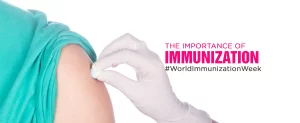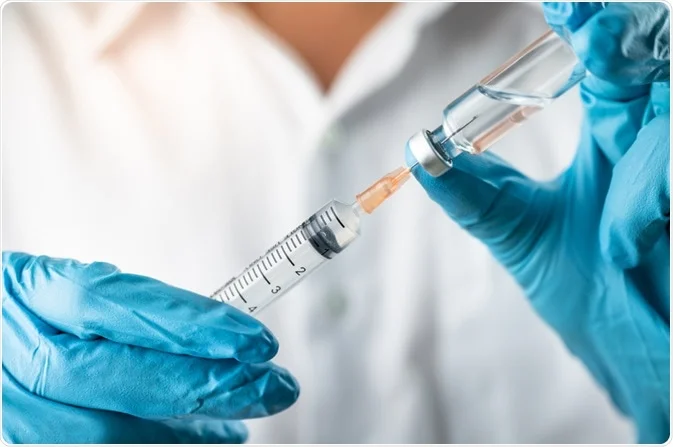The process of administering vaccinations to people to protect them from specific infectious illnesses is known as immunization, commonly referred to as vaccination, and it is a critical component of public health. The purpose of vaccines is to stimulate the immune system in a controlled way so that the body can build up defenses against particular pathogens (such viruses and bacteria) without actually contracting the disease.
One of the most effective ways to stop the spread of infectious diseases is through vaccination. Vaccines aid in the prevention of diseases that have previously resulted in serious sickness, disabling conditions, and even death.
Herd immunity is produced when a sizable proportion of a community receives a vaccination against a disease. By lowering the overall prevalence of the disease, this phenomena helps safeguard people who cannot receive the vaccinations, such as those with compromised immune systems or certain medical conditions.
Vaccine types include subunit, conjugate, and mRNA vaccines, as well as live attenuated vaccines (weakened versions of the pathogen) and inactivated vaccines (dead versions of the pathogen). Although each type stimulates the immune system differently, they all work to strengthen immunity.
The age, location, and vaccinations that are available all affect the vaccination schedules. For newborns, kids, teens, and adults to receive immunizations at certain times to guarantee maximum protection, governments and health organizations often issue suggested schedules.
Childhood Immunizations: Childhood immunizations offer defense
Vaccine diplomacy: Immunizations have also been employed as diplomatic and international cooperation tools. To promote global health and fortify international ties, some nations collaborate or donate vaccines.
Pandemic Preparedness: The COVID-19 pandemic brought to light the significance of vaccine distribution and development during major public health emergencies. The quick creation of COVID-19 vaccines showed the possibilities of technological improvement and global cooperation.
against a number of illnesses, including polio, diphtheria, tetanus, pertussis (whooping cough), measles, mumps, rubella, and more. To develop robust and long-lasting immunity, these vaccinations are typically administered in a series.
Immunizations for adults: Vaccinations are not just for kids. In order to retain immunity or provide protection against particular diseases including the flu, pneumococcal infections, and shingles, adults may need booster doses or extra vaccinations.
Travel vaccinations: People may require supplementary vaccinations to fight against diseases that are more common there when visiting particular nations or regions.
Safety and Monitoring: Before being approved for use, vaccines go through extensive safety testing and monitoring. Continuous monitoring makes it easier to spot any potential side effects or negative reactions to vaccinations.
Vaccine reluctance is a result of a variety of myths and misconceptions that surround vaccinations. To make well-informed vaccination decisions, it’s critical to rely on accurate, factual information from reputable sources.
Impact on world health: Immunization efforts have been essential in reducing the prevalence of illnesses including measles, polio, and smallpox, all of which have been eradicated or are almost eradicated. However, problems with access, distribution, and hesitancy to vaccines continue.
Controlling an epidemic of a disease that can be prevented by vaccination can be aided by vaccination since it helps slow the spread of the illness and protects groups that are more susceptible to it.
Certainly, here’s some more information about immunization and its various aspects:
Process for Developing Vaccines: Pre-clinical research, clinical trials (Phase I, II, and III), regulatory approval, and post-marketing surveillance are all steps in the creation of vaccines. Before being made available to the general public, vaccinations must pass this stringent procedure to assure their safety, efficacy, and high quality.
Equity and vaccine coverage: To maximize the advantages of immunization, communities must reach high vaccination coverage rates. No matter their socioeconomic situation, health institutions work to guarantee that everyone has access to immunizations. Disparities in the vaccination rate can create disease-prone areas.
Fighting Emerging illnesses: Immunization is often a key tactic in the fight against new infectious illnesses. The creation of vaccinations during disease outbreaks can aid in controlling the disease’s transmission and avert further outbreaks.
Vaccine Adverse Events: Although vaccines are well studied for safety, adverse events can occasionally occur. Healthcare providers and regulatory organizations work together to investigate and effectively respond to these situations, which are highly watched.
Vaccine Hesitancy and Confidence: Vaccine hesitancy is the unwillingness to receive a vaccine notwithstanding its availability. Hesitancy may be caused by a variety of things, such as doubts about the safety of vaccines, inaccurate information, mistrust of healthcare institutions, and cultural or religious views. The problem of vaccine hesitancy is a complicated one that calls for open communication, education, and trust-building.
Global Vaccine Initiatives: Through programmed like the Expanded Programmed on Immunization (EPI) and the Global Vaccine Action Plan (GVAP), organizations like the World Health Organization (WHO), UNICEF, Gavi, and others aim to improve access to vaccines in low- and middle-income nations.
Innovations in vaccine technology: New and better vaccines have been created as a result of advancements in vaccine technology. Examples of cutting-edge vaccine design include mRNA vaccines, such as those created for COVID-19, which offer quick development and potent immune responses.
Diseases that can be prevented by vaccination: Immunization has significantly lowered the prevalence of a number of diseases. For instance, smallpox was declared eradicated in 1980 as a result of effective vaccination campaigns, and polio eradication efforts are still underway.
immunizations for Special Populations: To protect their health and the health of vulnerable populations, some groups, such as pregnant women, the elderly, and those with certain medical conditions, need to receive particular immunizations.
Healthcare professionals, public health organizations, and neighborhood groups collaborate to inform the public about the value of vaccinations. Falsehoods are debunked and factual information is provided by educational campaigns, workshops, and instructional resources.
The field of immunization has several facets and touches on a number of areas, including public health, ethics, and policy. The field of immunization is likely to change as science and technology advance, with continual efforts to increase vaccination efficacy, accessibility, and public comprehension.





























